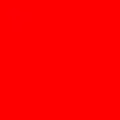The Grow Awards 2026 🏆 





















what lights should i use?
Growladyeastmidlandsanswered grow question 4y ago
Are you in uk ?
And your lights are both not good enough for grow your own im afraid
Yiu need at least 100w per plant and that's pull watts not led watts happy growing but you won't get any decent buds from them lights sorry for saying
NobodysBudsanswered grow question 4y ago
i don't know about this 100w per plant thing... 21-22 DLI is sthe minimm you want, and area of coverage is relative. it can amount to less than 100w in many contexts.
single point light, maybe 50w? if efficient and you kept plant fairly small footprint, it might do okay.
efficacy is often lied about on specification sheets, unfortunately. a 2umol/J light needs 150% more watts to provide same amount of light as a 3umol/J light. And that's a very possible context, give or take a few decimals. Watts translates to different outcomes due to differing efficacy. watts are a horrible thing to rely on... when i refer to watts it's simply because it's a slightlay more understood concept that umol/s, umol/J, ppfd, or DLI... all of which can paint a much more accurate picture.
read up on DLI. it'll allow you to compare apples to apples. most the other terms should be covered too. you want 21-40 DLI range.. higher the better.. there is a ceiling at some point based on environment and genetics to a degree too. lower range will have higher proportion of larf... higher range will have a better yield and lower proportion of larf. if you provide much less than 21dli, the plant will not be able to add mass... it may even contract or die.
in future when buying a light...
work backward from area of coverage... how many sq ft? if metric, even better you won't have to convert anything. reference a DLI table - google image search or make one they are simple as pie. with atmospheric co2, your ceiling is somewhere near 40 DLI. you don't "have" to max out, of course.
If using autoflowers, you can use 16-24 hours of light... if using photoperiod plants, you need to focus on teh "12-hour" use row. Find "40 DLI" give or take in those respecive rows. this will give "PPFD" which is just umol/s per m^2. Factor for your size of garden... if smaller than a 1m^2 area, you will need less than the value in the DLI as umol/s produced by a light.
so if .5m^2, you need 1/2 of the listed PPFD in umol/s produced from the light... let's say oyu have photperiods and 12/12 cycle... that's roughyl 900PPFD... you'd want 450umol/s from your light. the height from canopy should be based on best coverage of entire area.. observe and react, this is only a good starting point.
5-10% extra is never bad. LED like any other light dims over time. higher quality LED diodes should take 50k hours to dim to 90% of original intensity. this gets a bit complicated as spec sheets lie their asses off, again... you often have to reference the "real" spec sheet at samsung.com or bridgelux etc... their spec sheet is accurate, but it is also 1 diode type out of many in any 1 model, and it is the "best" one, of course but not the best for a garden... warmer white light and other factors reduce this optimal number given by the original manufacturer. but, if you get into nitty gritty, good to look at these sheets and determine how hard a particular diode "should" be driven to hit advertised specifications.
e.g. an LM301b or h samsung diode that isn't driven near 0.25watts per diode (simply divid watts/diode count) to be anywhere near 2.7-3.0 umol/J efficacy. watts multiplied by efficacy equals umol/s, if 1 of these specs is not advertised, you can calculate them easily. if it deviates greeatly from samsung's sheet, you know they lied their fuckin asses off.
cheap lights lie 99% of the time, fyi... even "reputable" grow light brand names in mid range often lie their asses off too. it's good to learn what the diodes are capable of. then you can weed through the bullshit.
1 like
Complain
Foffukuntzanswered grow question 4y ago
To be clear,100w is including flowering as a minimum,just seen video,all that plant will do is stretch for light,that high would need mega light.
CFL lighting (to include T5, T8, and T12) = 65 watts per square foot.
HID (MH, CMH, or HPS) = 50 watts per square foot.
LED (there are some exceptions to this and it is a complex situation, but in general) = 35 watts per square foot.
Look at a Mars hydro ts600 for 1 plant all the way through for less than £70 led.
Be lucky
likes
Complain
Foffukuntzanswered grow question 4y ago
Those little LED are good for early seedling as you can get them close without heat damage, also stops it stretching for light....household bulb, hmm,cool blue 100w output?
Look at my blurple cheap led USB I use on my new grow, similar.
Minimum light output 100w for grow, per plant, blue spectrum early, red flowering.
Many LED full specs out there, DLI ( daily light integral ) is as important as the light itself.
likes
Complain
Similar Grow Questions
Solved

Blind_japanese
Distance from bulb or from reflector?I found content about the distance from grow lights to the plants. I Know that using a 250w MH bulb the distance should be in a range from 20cm to 30cm. But i dont know If I should measure the distance from the glass of the reflector or from the bulb itself to the plants. Help!Week 3
Setup. Lighting
6y ago
1
2
Solved

Mikewithgreenthumbs420
Switching grown lights not sure what too remove got new ledI got a new veg light and led bloom light my question is should I remove my ballast light from bloom room or can I run both led plus ballast light together. That's what I'm wondering whats the best way to go I'm currently just using this light Last picture is my veg blue an white
Setup. Strains - Photoperiod
Setup. Lighting
5y ago
1
Solved

Grow4Releaf
General question about raising lights.Gotta question for what most of you are doing to raise your lights?
Currently I've just set it static and move as needed. But I'm curious if anyone has a easier method or know of anything made to aid in the raising of the LED light fixtures ?
Setup. Lighting
3y ago
5
5
Solved

MVgenetics
T5 veg? For seedlingsIf anyone has any idea how long I can veg my seedlings inside of a closet with 2 t5 fluorescents.. let me know! I’m close to harvest with my first round, but they still have another 2-3 weeks at least and i can’t put my new girls in the 12/12 tent on their schedule. TIA!!!5y ago
3
2
Solved

bbkaldo
'Claws' on tips just after flowering started. Previous answers help - it is a bit worse. I keep a perfect VPD. What should I do? Flower wouldnt fI'm confused. For the first 3w I used LED as instructed 30-40cm, I had ~43cm,100%dim, everything was fine. When the bloom started yellow claws appeared and still there, maybe a bit worse, with 53cm and 75%dim. Mostly on BPP, one more plant showed her claws today aswell. 😓
Leaves. Edges burnt
Leaves. Tips - Burnt
Setup. Lighting
2y ago
2
2
Solved

BarrelOfTheBong
Found a cheap light that I think would be perfect in my small tent, would it?Would this light be good to add to my setup? (60W 55 draw cob in a 40x40x120cm tent)
://i.imgur.com/VTayXRu.png
4500 Lumen
4000 or 6400 Kelvin
50 Watt
(I already know there is much better, but know I am asking about this one)Setup. Lighting
4y ago
3
2
Solved

azvibez88
LED LIGHTS and AutoflowersLED lights and Autoflower-- can i use veg and bloom throughout the grow?Setup. Lighting
4y ago
2
2
Solved

Ema26
What’s up guys 12/12 my photo two weeks ago, and at some point In the last 7 days I’ve managed to flick the override switch on my timer so she’s been receiving 12/12 for atleast a week and then 24hrs for however long, what do you think will happen? Confused her? Thanks!Setup. Lighting
6y ago
2
5
Solved

Percy
Can you grow in a 60x60x90cm budbox tent 600d mylar have a 600watt dimmable led plus 4inch fan and carbon filter
One. Will all this fit plus my pkant using SCROG Techniques.
Two. Is PHLIZON 600W DIMMABLE a good selectionnfor led lighting
Please help...
Setup. Strain - Autoflowering
Setup. Lighting
Setup. Ventilation
4y ago
3
4
Solved

m0use
LED Kelvin Temp 3000k-6500kIs there a massive difference in colour temperature/kelvin of LED's if the lumens, PAR, watts, intensity and every other aspect you can think of is the same but its temp/kelvin is lower? I use a 6500k LEDs, may mix in or switch to 3000K for better flowers if its proven to work.
6y ago
5
3
Solved

MangJs
HLG 350R or ES300 V3 ??Hi Growmies,
planning on adding an additional light on my 4x8 I currently have 1x HLG 650R running, but need your opinion if I should go for HLG350R or ES300 V3 ( Green sunshine Co ) whats your thoughts? i want to leave quarter space inside to work on and also to put some equipSetup. Lighting
5y ago
3
3
Solved

Kush_Monster
Veg and bloom switch on 600w ledI have a 600w full spectrum LED grow light that has switches for both bloom and veg. Growing autoflowers, how do i know when to turn on the bloom switch? Also how far away should a 600w led be away from the pot at germination, veg, and flower?Setup. Lighting
5y ago
2
2
Solved

Tango_Hotel_Charlie
lightsanyone ever combine a 315w cmh and 600w hps in a grow tent?Setup. Lighting
6y ago
1
5
Solved

Nylanderfour20
Light cycle messed up do I have leverage for one mistake?Timer messed up the cycle and stayed on for an extra 12 hours.. So in total she was, for 24 hours in light... Soon as I noticed I manually turned off.
Now the question is.. It's messed up and now off when supposed to be on vice versa, does the one mistake matter so much, seeding?4y ago
4
3
Solved

Wakesk8
Spider Farmer SF1000Hello guys
I’m going to buy the spider farmer sf1000 I saw its becoming popular and I would try along with my Cultilite Led 180w Cobe in a tent 80x80x180..I think I will have a plenty of light and massive buds ? Cultilite generate 22C degree..Other. General questions
Setup. Lighting
5y ago
2
Solved

QuiGonJib
Almost doneThis is our first grow and we are in week 6 of bloom. Does anyone have an idea for the brother in the picture. He grew above the lights. We not sure how to handle it. Two leaves are to close to the light and turned yellow. Should we cut them away or leave them on it
Leaves. Color - Yellow
Setup. Lighting
4y ago
1
2










